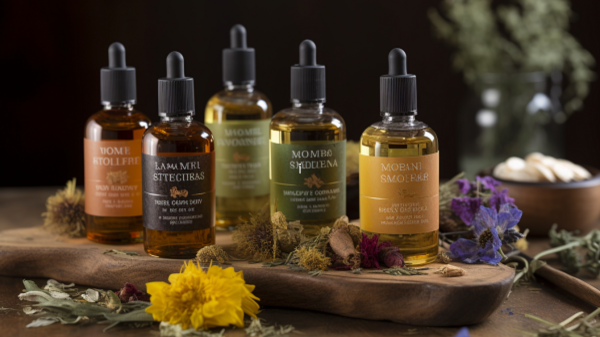In our increasingly digital age, the intersection of technology and traditional botanical knowledge has given rise to a valuable set of the best apps for medicinal herb identification.
Apps like Herbalist, iNaturalist, PlantSnap, Seek by iNaturalist, and PictureThis not only facilitate the recognition of numerous plant species but also provide insights into their medicinal uses, a feature of immense value to both practitioners and enthusiasts of herbal medicine.
However, the effectiveness and accuracy of these applications can vary greatly. To better understand which app might best serve your needs, it is essential to reflect on their unique features and the experiences of their user communities.
Let’s explore how these digital aids are reshaping the landscape of herbal identification and what potential users should look for when selecting an app.
Popular Medicinal Herb Apps
Several apps have emerged as popular tools for identifying and learning about medicinal herbs, each offering unique features and resources tailored to enthusiasts of herbal medicine.
Apps like Herbalist and Herbarium stand out by providing detailed information about medicinal plants, including their scientific names, common uses, and methods of preparation, consequently catering to users interested in herbal medicine. These plant ID apps serve as essential educational resources, helping users understand and apply the knowledge of herbal medicine in practical ways.
iNaturalist adopts a community-driven approach, allowing users to not only identify medicinal herbs but also engage with botanists and herbalists, enhancing the learning experience through interactive participation. This method fosters a deeper understanding of herbal properties and their applications, promoting a sense of liberation among users as they gain autonomy over their health and wellbeing.
Furthermore, apps like PlantSnap and Seek by iNaturalist, while broader in their target audience, still provide valuable insights into the area of medicinal plants. They encourage users to explore their properties, thereby expanding the community of informed users and democratizing knowledge in the field of herbal medicine.
App Feature Comparisons
Addressing the varied needs of users, medicinal herb identification apps differ markedly in their features, ranging from user interface design to the depth of botanical information provided. User-friendly interfaces are essential in aiding users to navigate effectively through extensive plant databases, enhancing the overall utility of the app in identifying plants.
These apps often incorporate educational content that extends beyond mere identification; they explore detailed descriptions of botanical names, parts used, and their respective medicinal applications. This educational aspect not only enriches the user’s knowledge but also supports accurate herb identification.
Furthermore, the inclusion of community engagement features within these apps, such as forums and user-generated content, fosters a collaborative environment where users can exchange insights and personal experiences related to medicinal herbs. This aspect of community involvement is vital for a dynamic learning experience and for enhancing the collective knowledge base.
However, a noted limitation within these apps is their often restricted focus on commonly known herbs, leaving those with an interest in more obscure botanical specimens seeking additional resources. This gap highlights the importance of app developers expanding their plant database to cater to the advanced needs of users, thereby promoting a more inclusive approach to medicinal herb identification.
User Experience Insights
In light of user feedback, it becomes evident that many medicinal plant identification apps fail to meet expectations due to their limited coverage and lack of detailed botanical information.
Users frequently express dissatisfaction with the scope of these tools, which often focus on common plants and overlook more advanced medicinal species. The absence of botanical names greatly hampers the ability to accurately identify various flora, leading to confusion and potential misuse.
Further analysis reveals that users crave in-depth, easily accessible content that extends beyond mere identification. There is a notable demand for detailed recipes that elucidate how different plant parts should be utilized for medicinal purposes. This specific information empowers users to apply their knowledge effectively, fostering a sense of liberation and self-sufficiency in managing health care.
Accessibility remains a critical factor; an intuitive user interface can greatly enhance the learning and identification process, making detailed botanical and medicinal information readily available.
Moreover, the feedback underscores an urgent need for developers to embrace these insights and improve app functionalities, ensuring that users not only identify medicinal plants but also understand their applications thoroughly. This approach would profoundly impact the user experience, bridging the gap between novice enthusiasts and knowledgeable herbalists.
Community and Support
Community engagement plays an essential role in enhancing the functionality and user satisfaction of medicinal plant identification apps. By fostering a supportive network where users who share common interests in medicinal herbs can share experiences and knowledge, these digital platforms transform into collaborative citizen science projects.
Feedback loops are vital; they not only help in refining app features but also in expanding the content to include more advanced medicinal plants and detailed usage recipes. The table below highlights key aspects of community engagement and its impact:
| Feature | Impact on App Development |
|---|---|
| User Experience Sharing | Enhances content relevancy and practicality |
| Community Suggestions | Drives updates and fills content gaps |
| Supportive Network | Encourages continuous engagement and learning |
This collaborative environment not only enriches the user’s learning experience but also propels app development forward. Developers can leverage this community-driven data to refine their offerings, ensuring that the apps meet the evolving needs of their users.
Consequently, community engagement in medicinal herb apps is not merely a feature but a fundamental component that shapes the educational and practical landscape of herbal medicine exploration.
Pricing and Accessibility
Pricing structures and accessibility options greatly influence the adoption and usability of medicinal herb identification apps. These apps, essential in empowering users with knowledge about medicinal herbs, vary markedly in their pricing and accessibility, impacting their reach and utility.
- Free Access: Many apps such as PlantNet and iNaturalist are free to download, catering to a diverse user base. This inclusivity promotes widespread access to herbal knowledge, vital for those seeking health liberation without economic strain.
- Subscription Models: Premium apps like PictureThis offer advanced features through subscription models ranging from $2.99 to $29.99 annually. These fees support detailed, in-depth herbal information, which can be fundamental for users requiring more than just basic identification.
- Platform Compatibility: Guaranteeing availability on both iOS and Android platforms, these apps broaden their user base, making the tools accessible to virtually anyone with a smartphone. This universality is critical in democratizing access to herbal medicine information.
The blend of free and paid options, along with extensive platform compatibility, guarantees that these medicinal herb identification apps can meet diverse user needs, promoting an informed and health-conscious community.
Related Post: 10 Best Herbal Medicine Books to Expand Your Healing Skills.
Conclusion
In summary, the integration of technology in the field of herbal medicine through these top five apps has greatly improved the accessibility and understanding of medicinal herbs.
The apps provide thorough databases, user-friendly interfaces, and valuable educational resources that cater to a range of expertise levels. Additionally, their community features facilitate knowledge exchange and support among users.
The diversity in pricing and accessibility options further guarantees that a broad audience can benefit from these technological advancements in herbal identification and application.




